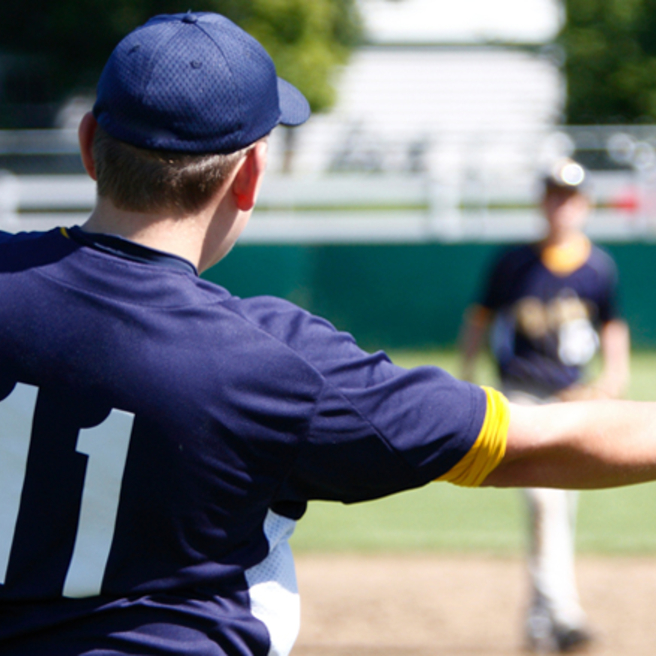
Once baseball season winds down, it's a crucial time for adolescent and teen baseball players to shift focus to a new game plan and think about how they should be spending their offseason. There are many ways young athletes can make the most of their time off that lets them continue to develop their skills while preventing injury.
The offseason is a time to give arms a break from the repetitive stress of throwing. Experts recommend that youth baseball players take at least 2-3 continuous months off from throwing activity to reduce the risk of overuse injuries. This is the time to switch focus from baseball-specific skill acquisition to strength and conditioning that builds general athleticism and resilience.
Youth athletes that are entering or within a growth spurt may be particularly vulnerable to certain injuries due to underlying changes in body size that affect muscle strength, flexibility, and biomechanics.
While it may seem appropriate to focus training on the arm and shoulder, the unique nature of the throwing motion requires athletes to utilize their entire bodies efficiently. In fact, most of the power and efficiency in throwing is created by the legs, pelvis, and trunk.
Even if an athlete is resting their arm, they can be making active progress towards stronger and more accurate throwing through targeted exercises. Here are some tips to help you design the perfect offseason regimen:
Focus on flexibility
Lower extremity flexibility is critical to allow for proper body alignment and sequencing while pitching or throwing. Teen athletes tend to lack flexibility in their hamstrings, hip flexors, and calf muscles, which are particularly important.
Exercises that work on improving trunk rotation can also help create the mobility necessary for efficient throwing.
Focus on strength
During a season, certain muscle groups such as the rotator cuff may become weak and fatigued, making the offseason an ideal time to strengthen. Exercises that focus on shoulder rotation and scapular strengthening can be useful.
However, keep in mind that all pitching and throwing begins from the ground up. Strengthening your legs will not only improve your performance but also reduce the stress in your arm. Squats, lunges, and single leg balancing are great examples of exercises to incorporate into a training program.
It’s all in the hips!
To effectively transfer the energy from your legs to your throwing arm, you need to have strong hips and core muscles. Exercises that engage your hips and core, such as planks, side planks or clamshells, can be especially useful during the offseason.
Learn about our Throwing Medicine specialists for more information on throwing-related injuries or to schedule an appointment for a personalized evaluation and specific training recommendations.
Featured in this article
Specialties & Programs
Once baseball season winds down, it's a crucial time for adolescent and teen baseball players to shift focus to a new game plan and think about how they should be spending their offseason. There are many ways young athletes can make the most of their time off that lets them continue to develop their skills while preventing injury.
The offseason is a time to give arms a break from the repetitive stress of throwing. Experts recommend that youth baseball players take at least 2-3 continuous months off from throwing activity to reduce the risk of overuse injuries. This is the time to switch focus from baseball-specific skill acquisition to strength and conditioning that builds general athleticism and resilience.
Youth athletes that are entering or within a growth spurt may be particularly vulnerable to certain injuries due to underlying changes in body size that affect muscle strength, flexibility, and biomechanics.
While it may seem appropriate to focus training on the arm and shoulder, the unique nature of the throwing motion requires athletes to utilize their entire bodies efficiently. In fact, most of the power and efficiency in throwing is created by the legs, pelvis, and trunk.
Even if an athlete is resting their arm, they can be making active progress towards stronger and more accurate throwing through targeted exercises. Here are some tips to help you design the perfect offseason regimen:
Focus on flexibility
Lower extremity flexibility is critical to allow for proper body alignment and sequencing while pitching or throwing. Teen athletes tend to lack flexibility in their hamstrings, hip flexors, and calf muscles, which are particularly important.
Exercises that work on improving trunk rotation can also help create the mobility necessary for efficient throwing.
Focus on strength
During a season, certain muscle groups such as the rotator cuff may become weak and fatigued, making the offseason an ideal time to strengthen. Exercises that focus on shoulder rotation and scapular strengthening can be useful.
However, keep in mind that all pitching and throwing begins from the ground up. Strengthening your legs will not only improve your performance but also reduce the stress in your arm. Squats, lunges, and single leg balancing are great examples of exercises to incorporate into a training program.
It’s all in the hips!
To effectively transfer the energy from your legs to your throwing arm, you need to have strong hips and core muscles. Exercises that engage your hips and core, such as planks, side planks or clamshells, can be especially useful during the offseason.
Learn about our Throwing Medicine specialists for more information on throwing-related injuries or to schedule an appointment for a personalized evaluation and specific training recommendations.
Recommended reading
Throwing Medicine

Throwing Medicine at CHOP was created to support adolescent athletes with upper extremity injuries.
Overuse injuries
The number of overuse injuries seen among young athletes continues to rise. Learn about common overuse injuries in kids and teens and how to prevent them.
Contact us
Sports Medicine and Performance Center